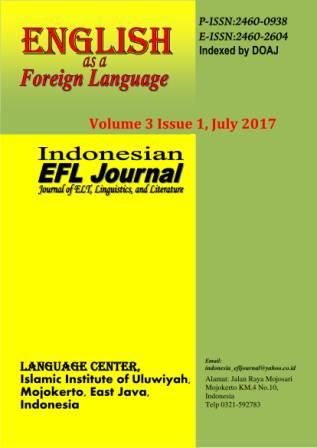Translation Analysis of Body-Related Metaphors in the Holy Koran by: Yusuf Ali, Marmaduke Pickthal and Thomas Irving
Abstract
The present study is a Corpus-based research which analyzes the translation of Body-Related Metaphors in the Holy Koran by Yusuf Ali, Marmaduke Pickthal and Thomas Irving, within the framework of Peter Newmark’s procedures of metaphor translation. The data analyzed consists of a sample of 107 words and phrases which are categorized as: metaphors of ear, eye, face, and hand. Out of the seven procedures proposed by Newmark for translating metaphors, the translators applied five procedures. None of the translators applied Newmark’s fourth or sixth procedure and no new procedure was observed. The results reveal that among 107 metaphors examined, there is a general tendency (57.94%) towards reproducing the same image in the TL, and the three translators translated 68 metaphors (63.55%) using similar procedures. This study concludes that the likely and the most frequent metaphor translation procedures in the Holy Koran are: (1), to reproduce the same image in the TL, Newmark’s first procedure; and (2), to convert metaphor to sense (literal meaning), Newmark’s fifth procedure.
References
Aldahesh, A, Y. (2006). (Un)Translatability of the Qur’Än: A Theoretical Perspective. Australia: International Journal of Linguistics.
Almisned, O, A. (2001). Metaphor in the Qur'an: an assessment of three English translations of Suurat Al-Hajj. Durham theses. Durham University. Available at Durham E-Theses Online: http://etheses.dur.ac.uk/1663/
A'zami, M, M. (2003). The History of the Qur'anic Text from Revelation to Compilation: A Comparative Study with the Old and New Testaments. Leicester: UK Islamic
Cuddon, J, A. (2013). A Dictionary of Literary Terms and Literary Theory. 5th Edition. UK. Blackwell Publishers Ltd.
Fez-Barringten, B. (2012). Architecture: The Making of Metaphors. Newcastle upon Tyne: Cambridge Scholars Publishing
Hassan Zadeh, M, M., Lashkarian, A., & Sadegh Zadeh, M. (2015). Translating the Holy Quran: A Comparative Analysis of Al-Fatiha Verse from Arabic to English. Iran: Iranian Journal of Social Sciences and Humanities Research.
Khan, S. (2000). Tell Me About The Prophet Muhammad. Publisher: Goodword Books,
Lakoff, G. Johnson, M. (1980). Metaphors We Live By. Chicago: University of Chicago Press.
Larson, M, L. (1998). Meaning-Based Translation: A Guide to Cross-Language Equivalence. New York: University Press of America.
Leaman, O. (Ed.). (2006). The Qur'an: an Encyclopedia. London: Routledge.
Longman Dictionary of Contemporary English: http://www.ldoceonline.com/
Maula, A. (2011). A Metaphor Translation of The Holy Qur'an: A Comparative Analytical Study. UIN Syarif Hidayatullah. Jakarta.
Merriam-Webster Dictionary. Retrieved from: http://www.merriam-webster.com/dictionary/
Mohaghegh, A, & Dabaghi, A. (2013). A Comparative Study of Figurative Language and Metaphor in English, Arabic, and Persian with a Focus on the Role of Context in Translation of Qur’anic Metaphors. TextRoad Publication. 3(4)275-282, 2013.
Mohaghegh, A, Ketabi, S. (2013). Qur’anic Metaphors and Their English and Persian Translations - Dead or Alive. Iranian Journal of Applied Language Studies. Vol.5, No.2, 2013.
Nassimi, D, M. (2008). A thematic comparative review of some English translations of the Qur’an. Britain: The University of Birmingham.
Newmark, P. (1988a). Approaches to Translation. London and New York: Prentice Hall.
Newmark, P. (1988b). A Textbook of Translation. London: Prentice Hall.
Oxford Advance Learner’s Dictionary. (7th Ed.). (2006) New York: Oxford University Press.
Pars Quran. Retrieved from: http://www.parsquran.com/
Pugh, S, L., Hicks, J, W., Davis, M., & Venstra, T. (1992). Bridging: A Teacher's Guide to Metaphorical Thinking. Urban., Illinois: National Council of Teachers of English.
Reda, G. (2012). A Study of Two Qur‟anic Counterfactuals: An Application of a Model of Conceptual Projection and Integration. International Journal of Linguistics.
Sadr-'ameli, S, A. (1383sh). An Enlightening Commentary into the Light of the Holy Qur'an. Iran. Isfahan. Publisher: Imam Ali Foundation.
Steen, G, J., Dorst, A, G., Herrmann, J, B., Kaal, A, A., Krennmayr, T., & Pasma, T. (2010). A Method for Linguistic Metaphor Identification. Amsterdam. Philadelphia: John Benjamins Publishing Company.
Zanotto, M, S., Cameron, L., Cavalcanti, M, C. (Eds.). (2008). Confronting metaphor in use: an applied linguistic approach. Amsterdan. Philadelphia: John Benjamins Publishing Company.
Zwemer, S, M. (1915). Translations of the Koran, The Moslem World. Prepared by: www.Muhammadanism.org.
Crystal, D. (2008). A Dictionary of Linguistics and Phonetics. 7th Edition. Oxford. Publisher: Wiley-Blackwell.
Copyright (c) 2017 Indonesian EFL Journal: Journal of ELT, Lingusitics, and Literature

This work is licensed under a Creative Commons Attribution-ShareAlike 4.0 International License.
All rights reserved.
this publication may be reproduced, stored in a retrieval system, or transmitted
in any form or by any means, electronic, mechanical, photocopying, recording.




